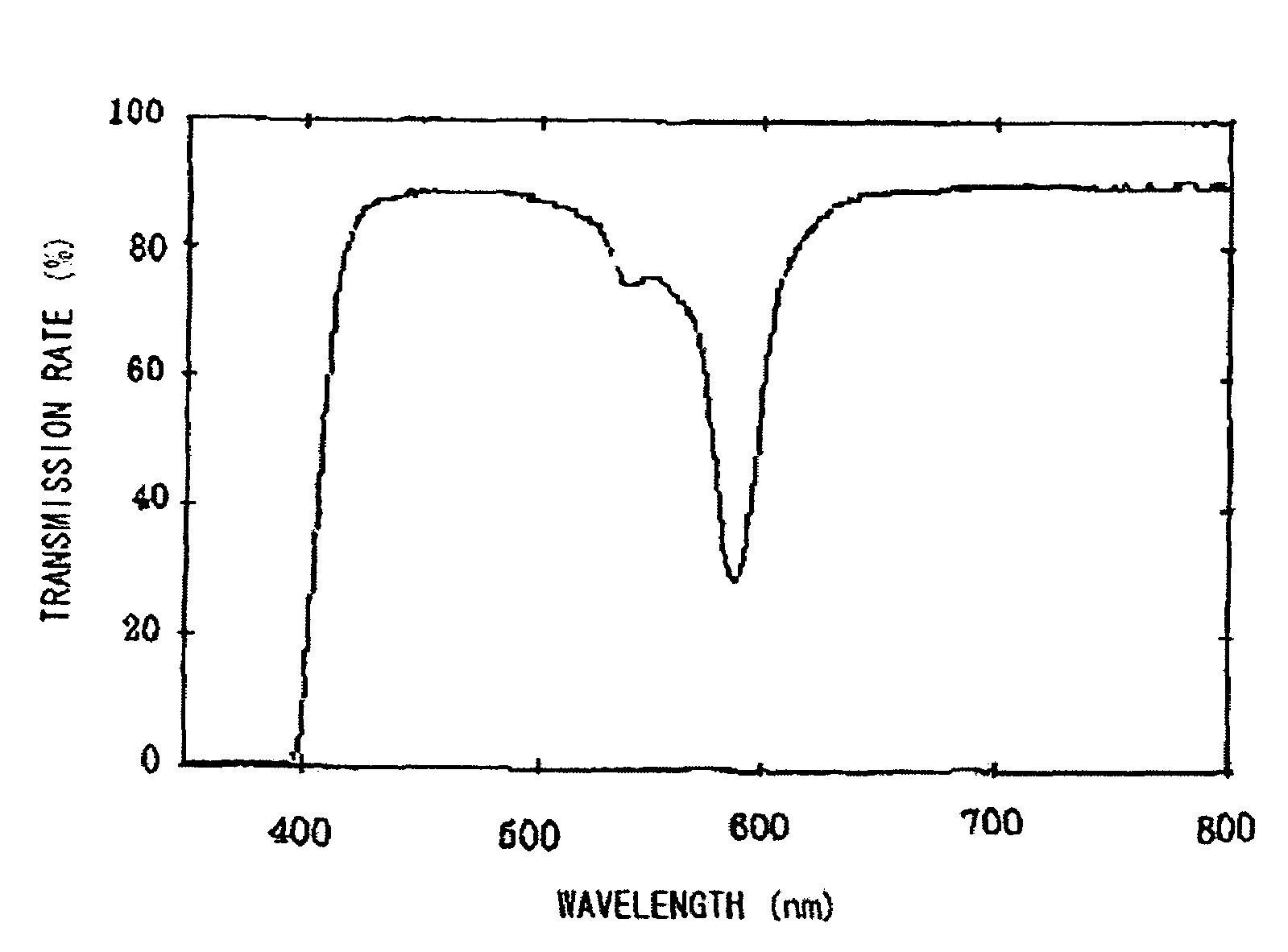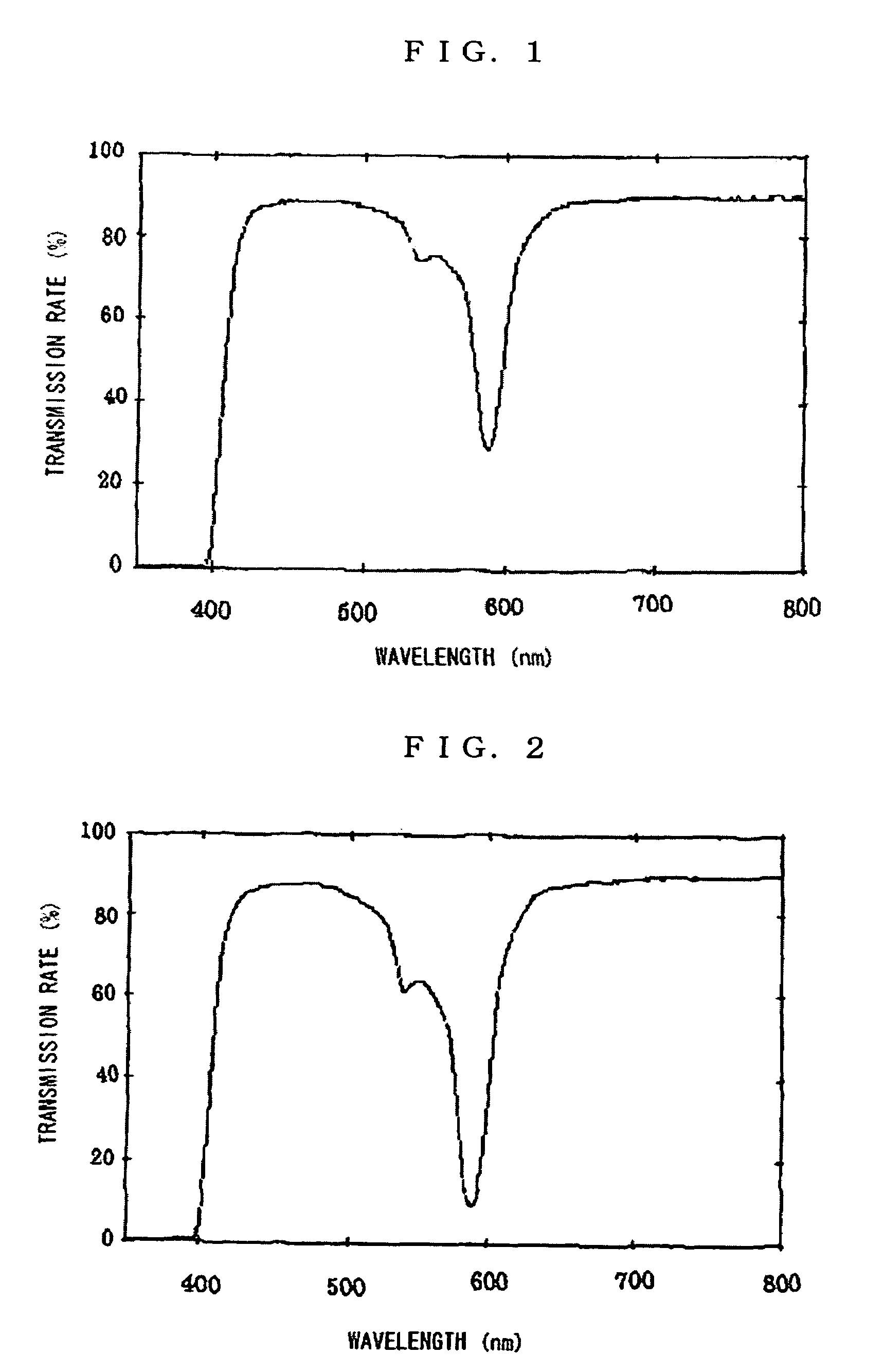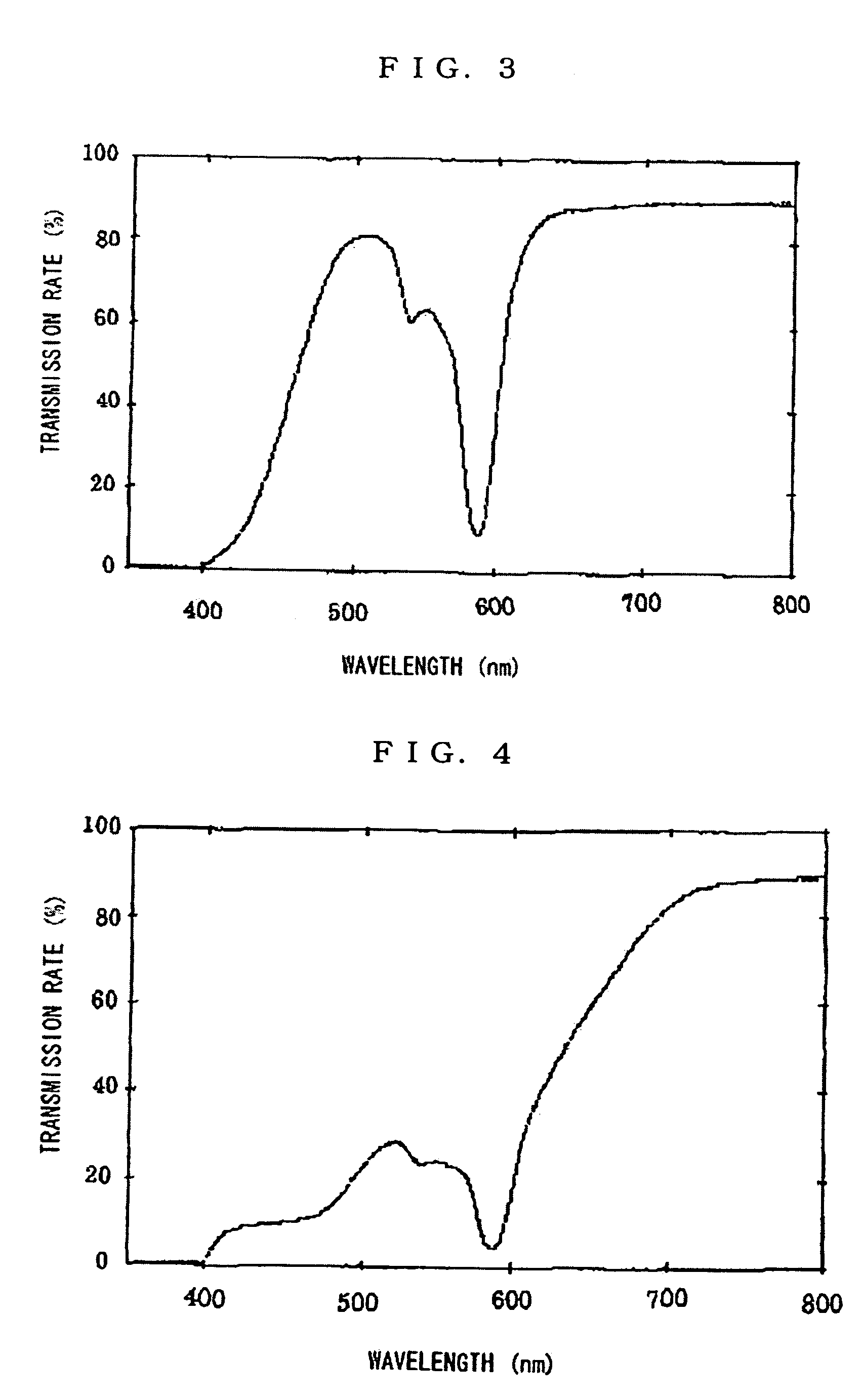Plastic spectacles lens
- Summary
- Abstract
- Description
- Claims
- Application Information
AI Technical Summary
Benefits of technology
Problems solved by technology
Method used
Image
Examples
example 1
[0151]0.0010 parts by weight of “PD-311S” manufactured by Mitsui Chemicals, Inc. was added to 50.6 parts by weight of bis(isocyanatemethyl)bicyclo[2.2.1]heptane (mixture of a 2,5-isomer and a 2,6-isomer) and the mixture was stirred to obtain a homogeneous solution. 23.9 parts by weight of pentaerythritoltetrakis(3-mercaptopropionate), 25.5 parts by weight of 4-mercaptomethyl-1,8-dimercapto-3,6-dithiaoctane, 0.02 parts by weight of dibutyltin dichloride as a curing promoter, 0.13 parts by weight of “Zelec UN” (registered trademark, manufactured by Stepan Company) as a parting agent, and 0.05 parts by weight of “Seesorb 709” (manufactured by Sypro Chemical Co.) as a UV absorber were added and dissolved with stirring, followed by deforming at room temperature under reduced pressure. The monomer mixture thus obtained was filtered through a 3 μm filter. The filtrate was poured into a lens cast molding die through a tube. The casting lens cast molding die is a plano-type having front and ...
example 2
[0153]A thermoplastic plastic spectacles lens was obtained in the same manner as in Example 1, except for using 0.0020 wt % of “PD-311S” manufactured by Mitsui Chemicals, Inc. Transmittance spectrum of the resulting lens is shown in FIG. 2. In this Example, the wavelength in the minimum transmittance peak was 588.0 nm.
[0154]The results of measurement of the light transmitted through the lens using a color meter are shown in Table 2. The color tone of the light observed through the lens was purplish blue. In the observation through the lens, lines of small branches of a tree on a fine day and a contrast of red, yellow, and green were very distinct.
[0155]
TABLE 2Measurement result of transmitted lightL*a*b*YExample 188.64−5.41−10.4273.4Example 283.20−6.31−18.6162.53L*, a*, and b* are the color indication methods according to JIS.Y is luminous transmission rate (unit: %).A transmission rate meter “UV-160A” manufactured by SHIMADZU was used for measuring the transmission rate.
example 3
[0156]A monomer mixture to be charged into the cast lens cast molding die was prepared in the same manner as in Example 1, except for using the dye shown in Table 3 in an amount shown in the Table. A thermosetting plastic spectacles lens having a desired color tone was obtained in the same manner as in Example 1 from the monomer mixture.
[0157]The transmittance spectrum of the resulting lens is shown in FIG. 3. In this Example, the wavelength in the minimum transmittance peak was 588.0 nm. The results of color meter measurement of the light transmitted through the lens and the color tone observed through the lens are shown in Table 4. In the observation through the lens, lines of small branches of a tree on a fine day and a contrast of red, yellow, and green were very distinct.
PUM
 Login to View More
Login to View More Abstract
Description
Claims
Application Information
 Login to View More
Login to View More - R&D
- Intellectual Property
- Life Sciences
- Materials
- Tech Scout
- Unparalleled Data Quality
- Higher Quality Content
- 60% Fewer Hallucinations
Browse by: Latest US Patents, China's latest patents, Technical Efficacy Thesaurus, Application Domain, Technology Topic, Popular Technical Reports.
© 2025 PatSnap. All rights reserved.Legal|Privacy policy|Modern Slavery Act Transparency Statement|Sitemap|About US| Contact US: help@patsnap.com



